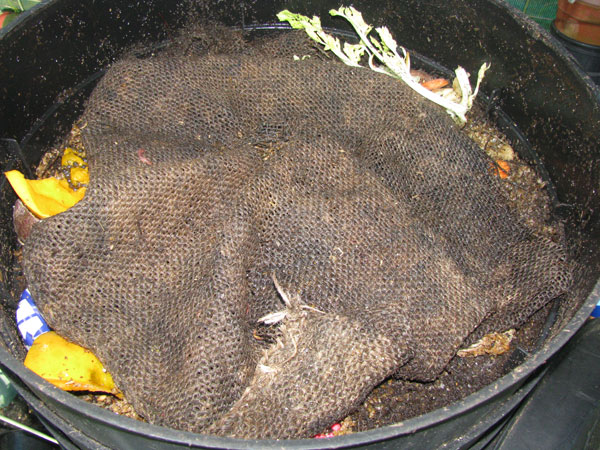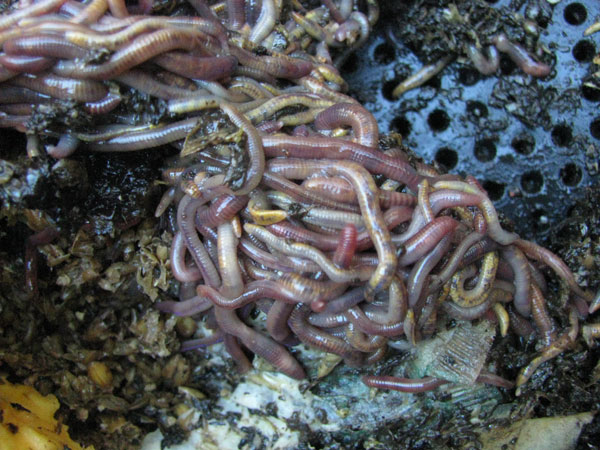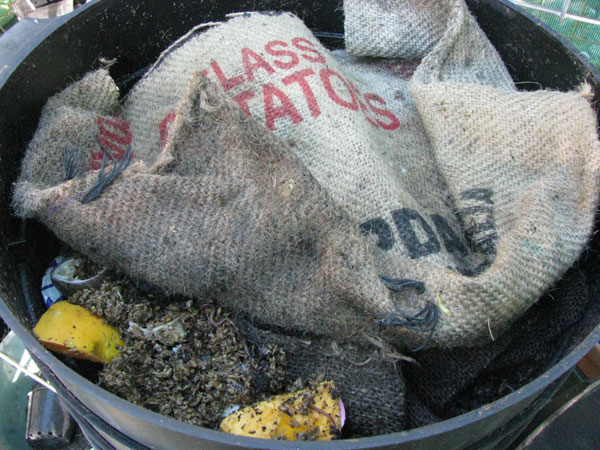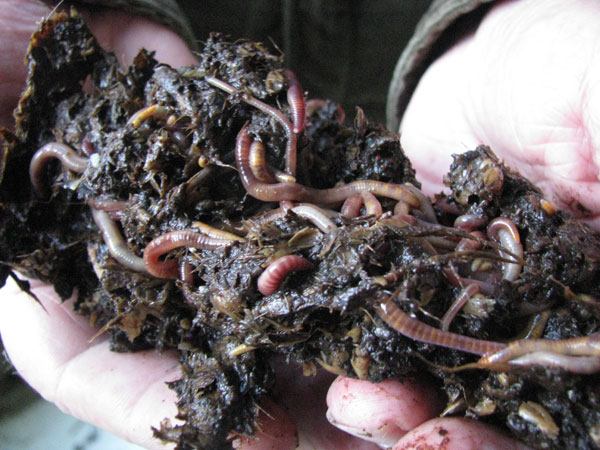Away with the worms
I highly recommend being a worm farmer. Worm farms take a little effort to set up and then it’s just scraps in and fertiliser out!
There are many different worm farms available to buy and plenty of information about making your own from recycled materials. Once you’re set up, knowing some basics about worms and how they work can help you run a successful, efficient recycling unit and fertiliser factory.
Compost worms are different to earthworms. Earthworms eat soil; compost worms feed on the microbes that break down the organic scraps, paper and garden waste you put in the farm. So fresh/raw is better than cooked – you’ll notice that cooked foods tend to take longer to break down in the farm. While some people advise against putting citrus or onions in the worm farm, I think it’s just that those foods are slower to break down and so are slower to produce food for the worms. Worms particularly like used coffee grounds (they make them dance – it’s true, try it and see!) – many cafes are happy to hand over spent coffee grounds so I reckon it’s always worth asking. Pulp from juicing is ideal, as are melon rinds and all things cabbagey. I never add meat or fish as these tend to attract flies and rodents. You can also feed them egg shells, paper and cardboard, small amounts of manure (leave for a few weeks if animals have been wormed), and finely chopped prunings from the garden.
Don’t overload – if the worm farm becomes smelly or maggoty, chances are there’s too much food for the worms to deal with. Always start with very small amounts of scraps so you can keep track of how long it takes your little workers to eat it all. A couple of handfuls of chopped scraps should be a good start.
Eventually, the worms will reduce everything organic in the farm to castings and worm wee. That includes the hessian, cloth or sack you use for a worm “blanket” – it needs to be replaced every few months as it gets eaten. A healthy worm farm doesn’t smell and neither do the castings or worm wee.
Protect your worms from extremes of weather – my worm farm is in the shadehouse but under eaves would also work.
Worm sex
Worms are hermaphrodites, so after mating, both can form egg/egg cases. The saddle-like area on a worm is called the clitellum – this develops into the egg capsule after mating. The eggs look a bit like sesame seeds.
All going well, your worms will breed and you’ll be able to give away worms to friends and family. Imagine the delight as they open their attractively packaged gift from you to find a writhing mass of new garden helpers!
The results
Any nutrients and minerals that go into your worm farm as scraps are recycled into a form that is more easily absorbed by plants: worm wee and worm castings are superfoods for the garden. Use castings to make your own potting mix or sprinkle over garden beds and around potted plants. Dilute worm wee to the colour of weak tea and use as a foliar spray or water into the soil. Your plants will never look back!
Handy hint: if you want to name your worms, you’ll need a spreadsheet. 😉
Tags: compost, livestock, worms
Posted in Organic Gardening








Leave a Reply